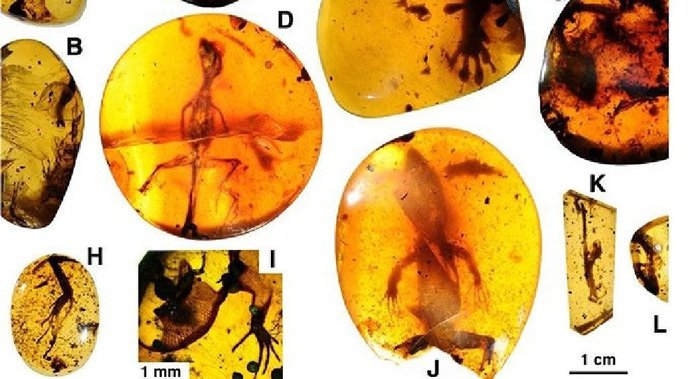The detailed fossils are impressive in their diversity, including the ancestors of modern day geckos and chameleons, and give scientists unusual insight into the evolution of lizard species.
"If you showed me the CT scans we made, I`d say that was a species of modern gecko," Ed Stanley, co-author of the study published in Science Advances on Friday, told Live Science.
"Except when you start looking closer, you found a couple of characters that no gecko has today."
The researchers used high-resolution CT scans to analyze the lizards and create 3D models of them.
Amber preserves fossils far better than rocks, and organs and bones can be preserved for millions of years. Some of the specimens found in Myanmar have intact skin, visible skin pigment and soft tissues.
The most scientifically significant find was one tiny lizard identified as an ancestor of modern chameleons, and extends the geological age of chameleons about five times, back to the mid-Cretaceous.
"The tiny, little specimen would never have been recognizable as a very primitive and close relative of living chameleons if preserved in rock. Minute but diagnostic characters simply would not have been preserved," co-author David Grimaldi said.
More about:
















































